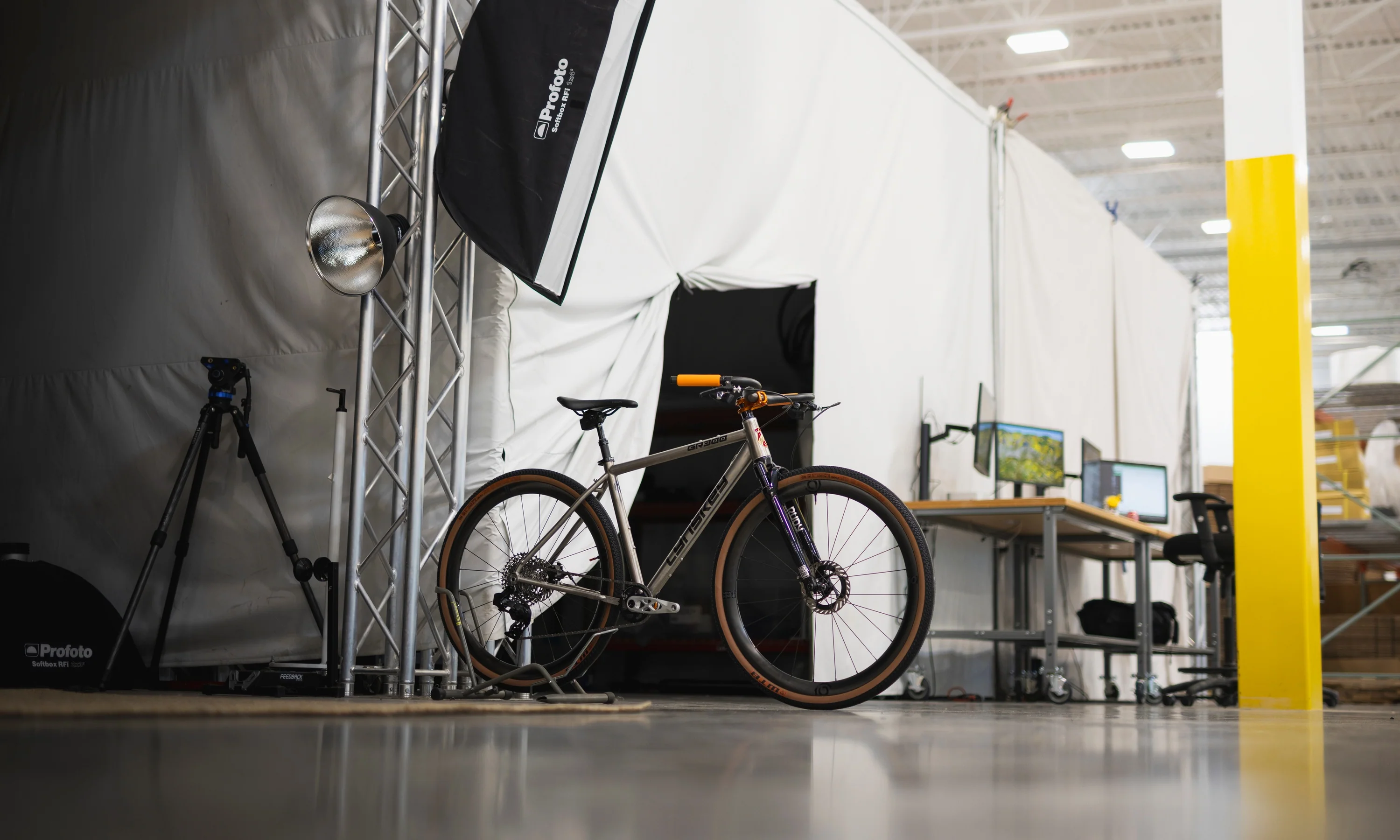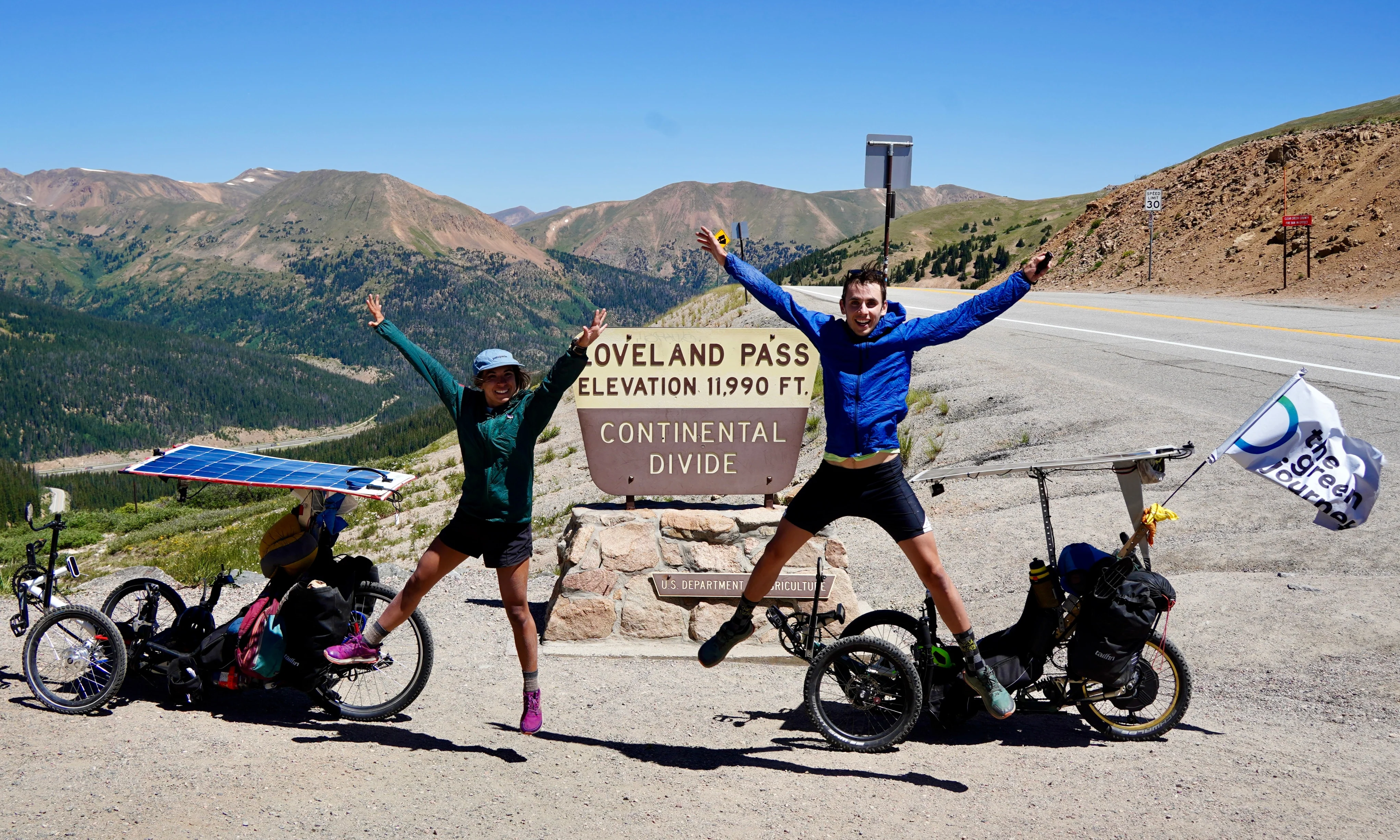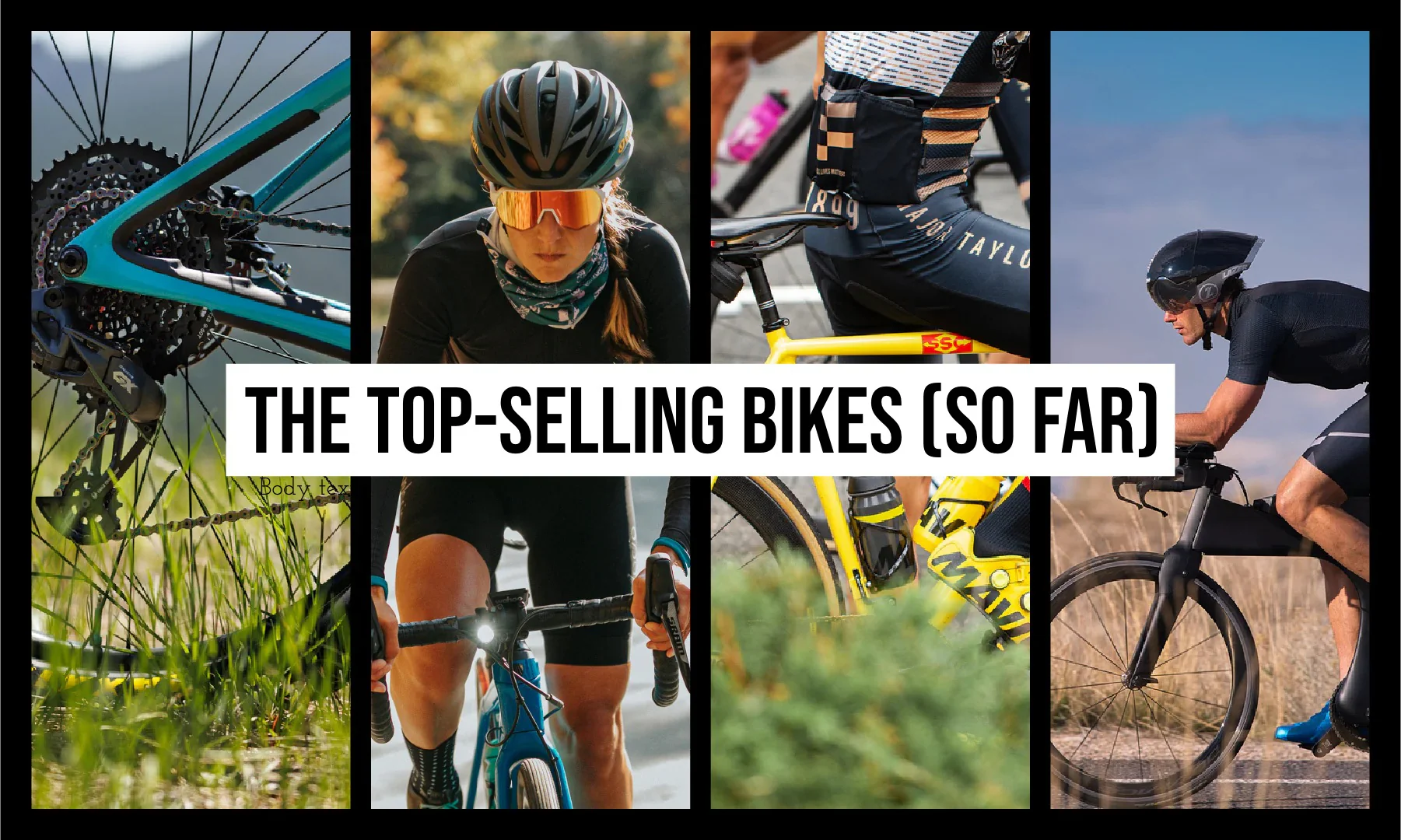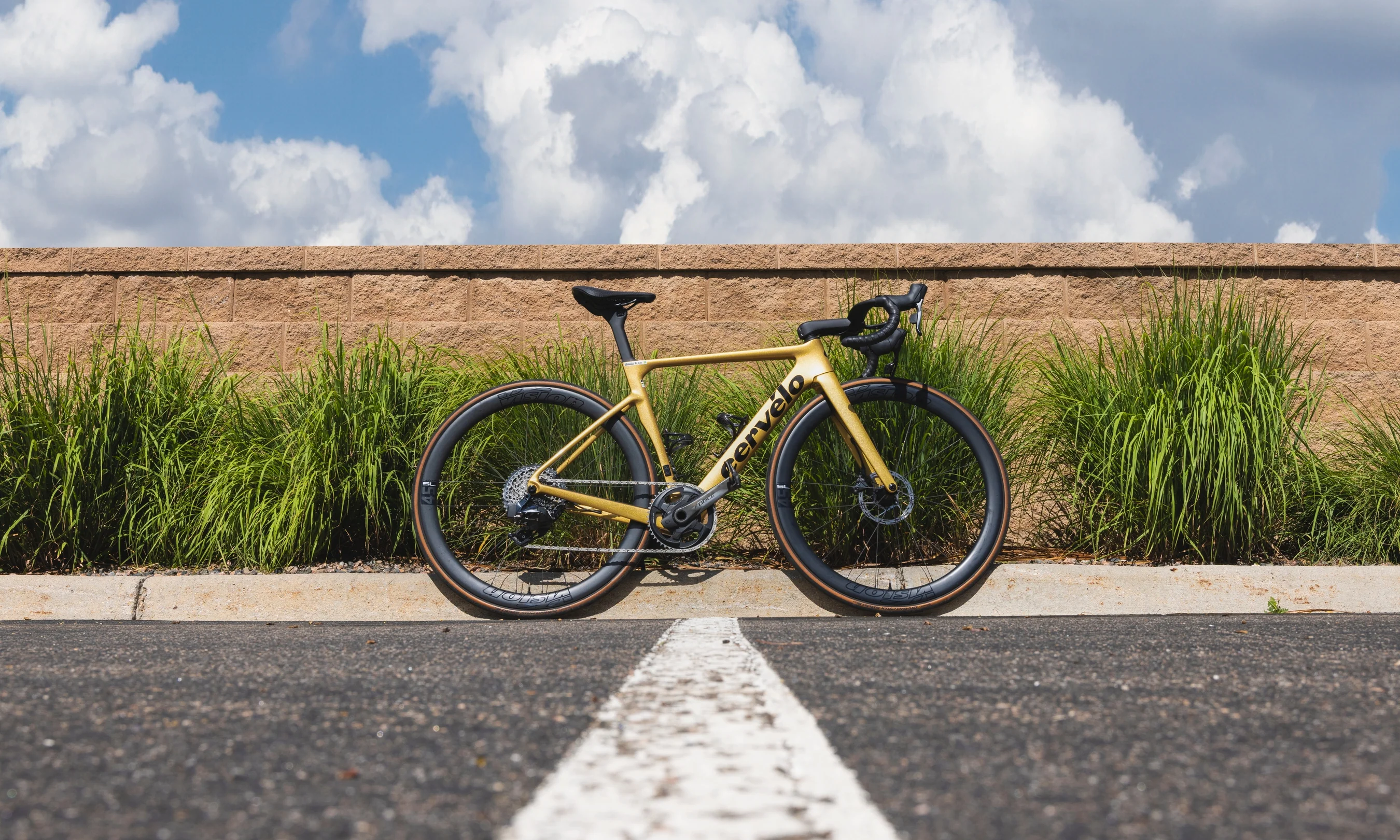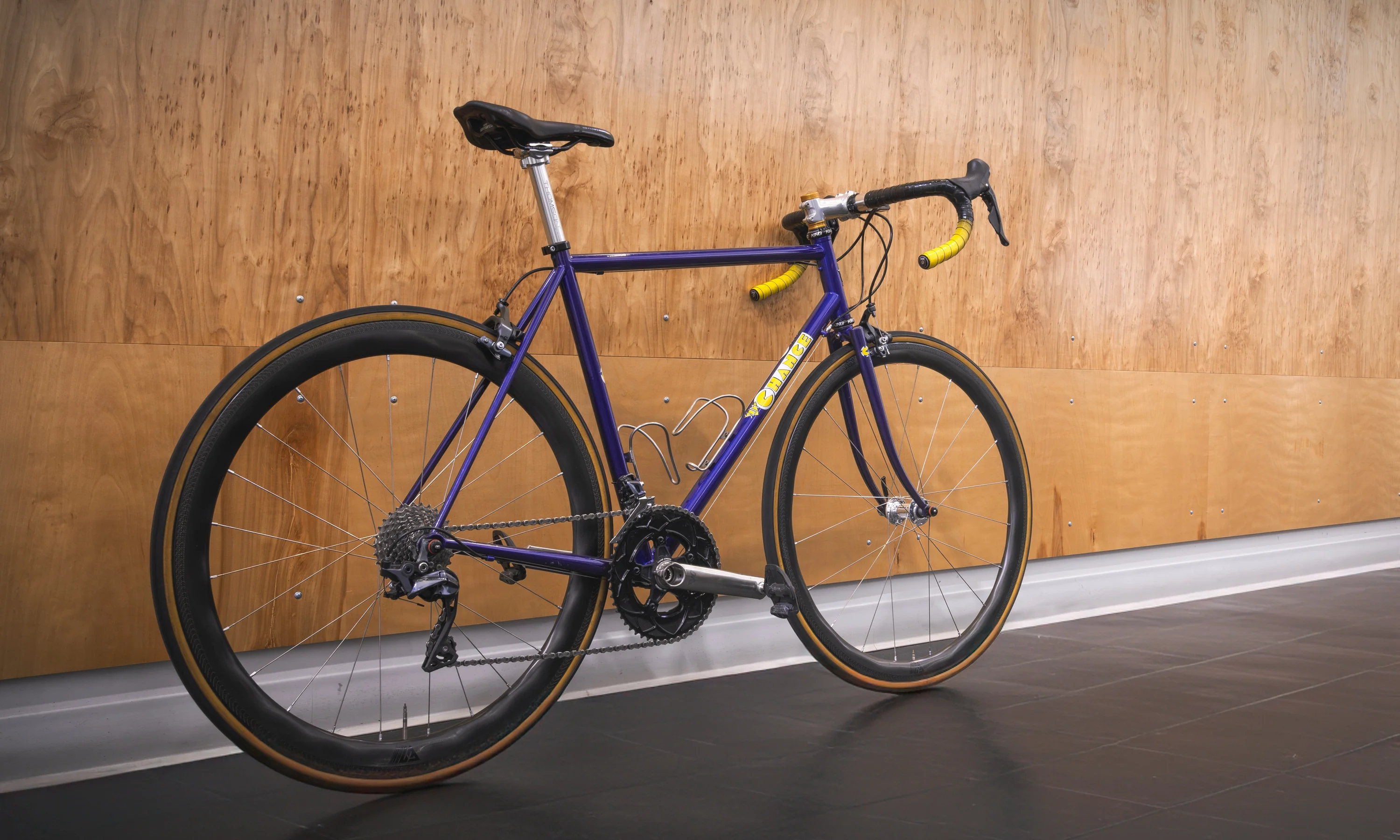The bikes in TPC’s vintage museum are all scattered across our headquarters, and right at the main office entrance, we have a 1990 Yo Eddy Team proudly on display. In a sea of beautiful vintage bikes, this Yo Eddy Team in the classic “Grello” colorway POPS.
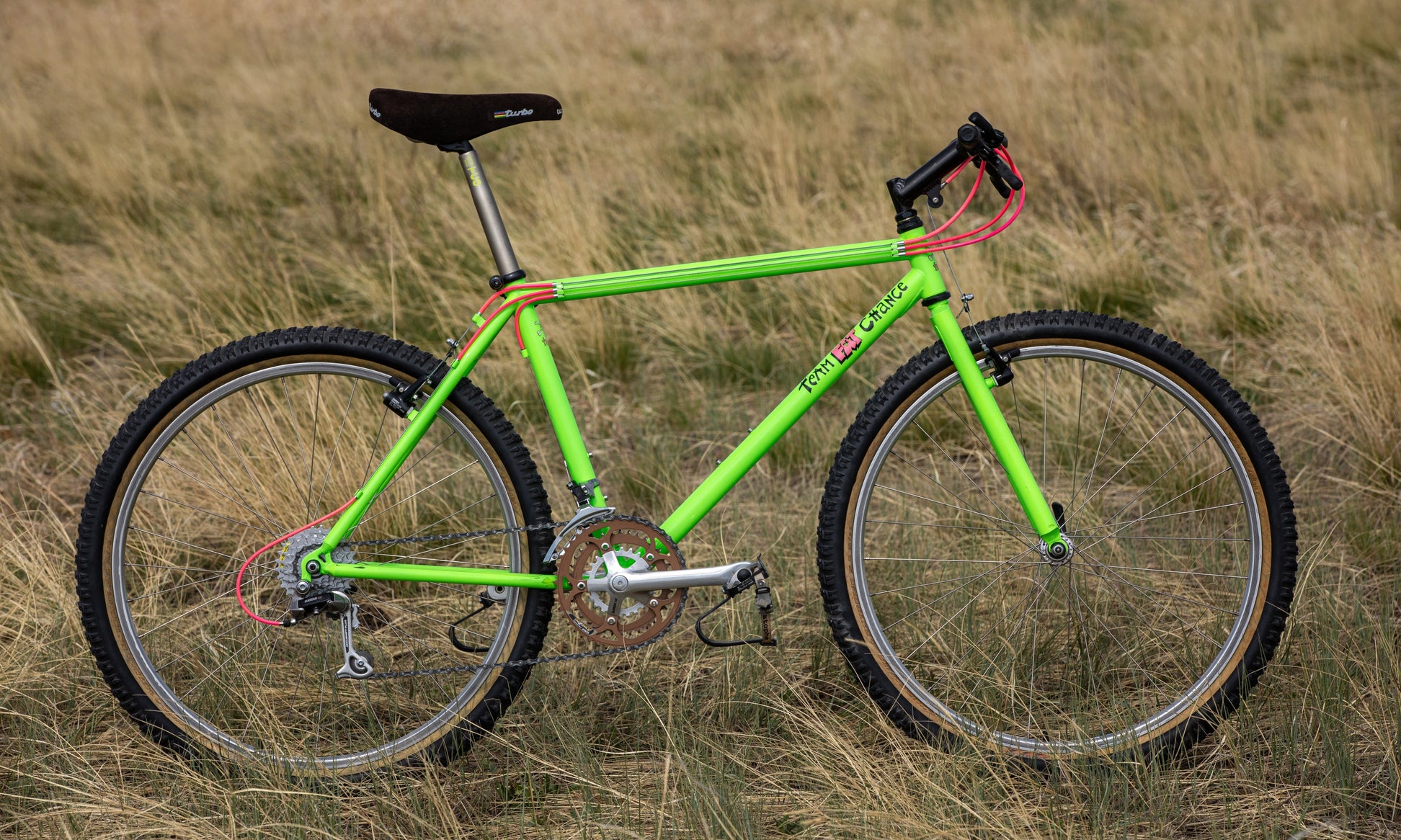
The 1990 Fat Chance Yo Eddy Team Grello from the TPC museum.
The eye-searing Grello color, combined with the bright pink cable housing and the playful Yo Eddy and Fat Chance logos, makes this bike one of my all-time favorite vintage mountain bikes.
Plus, the Yo Eddy doesn’t just look good, it rides well too. We’ve hosted many vintage mountain bike rides here at TPC and the Yo Eddy has always been the bike I choose to ride. They’re stiff and agile, great climbers, and a blast to whip around on tight and twisty singletrack. 30 years later and the frames still feel solid too. If I could choose only one vintage MTB for my garage (NOT a garage queen, but a bike that I would actually ride), a Yo Eddy Team is my pick.
 I rode this 1992 Fat Chance Yo Eddy Team from the TPC museum at our last Vintage MTB ride.
I rode this 1992 Fat Chance Yo Eddy Team from the TPC museum at our last Vintage MTB ride.
If you can’t tell already, I’m a bit of a Fat Chance fanboy. I even had the chance to meet Chris Chance, the builder behind Fat Chance Bikes, when he came to visit TPC back in 2016. He joined us on a vintage MTB ride and showed us his latest creation — a modern version of the Fat Chance Yo Eddy.
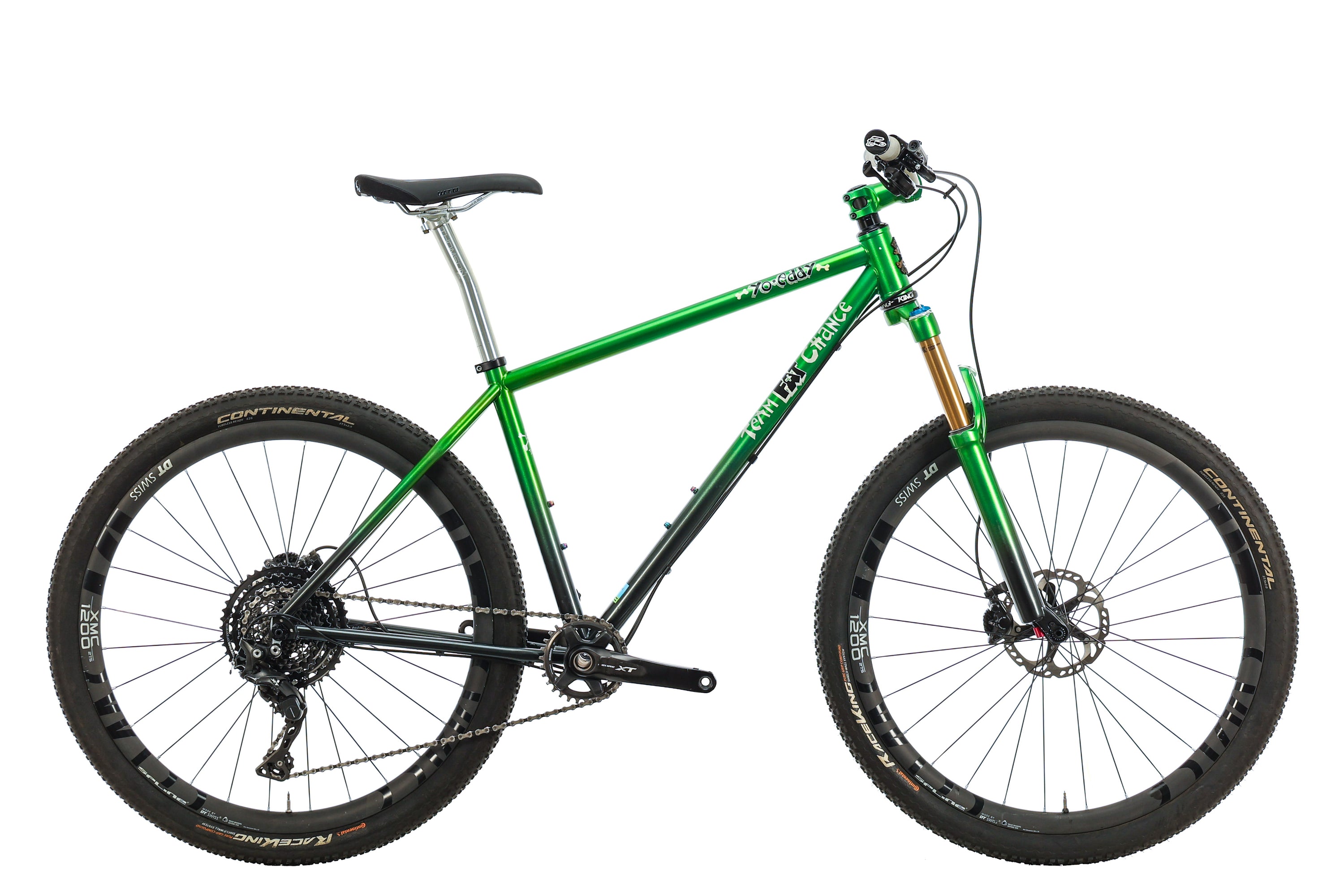 In recent years, I’ve seen a few of these modern Fat Chance mountain bikes come through TPC. Just last week, this beautiful 2017 Fat Chance Yo Eddy showed up, and I couldn’t resist stealing it away for a closer look, while also taking some time to remember how Fat Chance came and went, and then came back again.
In recent years, I’ve seen a few of these modern Fat Chance mountain bikes come through TPC. Just last week, this beautiful 2017 Fat Chance Yo Eddy showed up, and I couldn’t resist stealing it away for a closer look, while also taking some time to remember how Fat Chance came and went, and then came back again.
[button]Shop Mountain Bikes[/button]
The Rise and Fall of Fat Chance Bikes
Chris Chance learned to build bikes in the 70s as an apprentice at Witcomb USA, where he worked alongside several other future framebuilding legends: Richard Sachs, JP Weigle, and Ben Serotta.
 In the early 80s, the mountain bike craze was quickly spreading east. Capitalizing on the growing popularity of these “fat bikes,” Chance decided to strike out on his own and formed Fat City Cycles in Somerville, Massachusetts. The first model he made was the “Fat Chance” in 1982. Unlike many bikes of the time, it had steep angles, short stays, and a high bottom bracket, which made it perfect for the technical trails found in New England. More Fat Chance mountain bike models followed, including the popular “Wicked Fat Chance.”
In the early 80s, the mountain bike craze was quickly spreading east. Capitalizing on the growing popularity of these “fat bikes,” Chance decided to strike out on his own and formed Fat City Cycles in Somerville, Massachusetts. The first model he made was the “Fat Chance” in 1982. Unlike many bikes of the time, it had steep angles, short stays, and a high bottom bracket, which made it perfect for the technical trails found in New England. More Fat Chance mountain bike models followed, including the popular “Wicked Fat Chance.”
By the late 80s, mountain bike racing had exploded in popularity. Chris Chance began sponsoring racers, but they weren’t enamored with the Wicked Fat Chance, which placed a greater emphasis on comfort rather than speed. To satisfy his racers, Chance designed the first Fat Chance Yo Eddy in 1989. The geometry was more aggressive and the frame used oversized tubes to increase stiffness.

Supposedly, the name “Yo Eddy” was meaningless, but former employees claimed it was the name of the “bones and mohawk” cartoon character, which was designed by painter Mike Pappaconstantine as the bike’s head badge.
Fat Chance bikes maintained a cult-like following in the late 80s and early 90s, especially among East Coast riders (vintage Fat Chance owners refer to themselves as “Fat Cogs”). Unfortunately, by 1994, Fat City Cycles was out of money. Its facility was sold to an investor and closed, and the employees were let go.
The investor who bought Fat City Cycles attempted to move production to the Serotta HQ in Saratoga, New York, but Fat Chance 2.0 never really took off, and much of the original fanbase ended up turning to Independent Fabrication, which was started by the former employees of Fat City Cycles. Chris Chance bought his brand back in 1996 and relocated to Vermont, but it closed for good in 2000.
The Rebirth of Fat Chance Bikes
 Chris Chance and his modern Fat Chance Yo Eddy. Photo: Mike Wirth
Chris Chance and his modern Fat Chance Yo Eddy. Photo: Mike Wirth
Chris Chance was burnt out and left the industry after the death of the Fat brand. He still liked working with his hands and kept busy designing and manufacturing garden decorations, which allowed him to develop 3D modeling skills using CAD. He had no intention of returning to the bike industry, but a couple of serendipitous interviews would help reignite his passion.
A PhD student interviewed him for a thesis on mountain bike culture (what? I should have studied this in school!) which caused him to reflect on the bikes he had created and how much he had loved designing and building his own bikes. Then, a subsequent interview for a “Where are they now” article drew his attention to how important his creations had been to so many people.
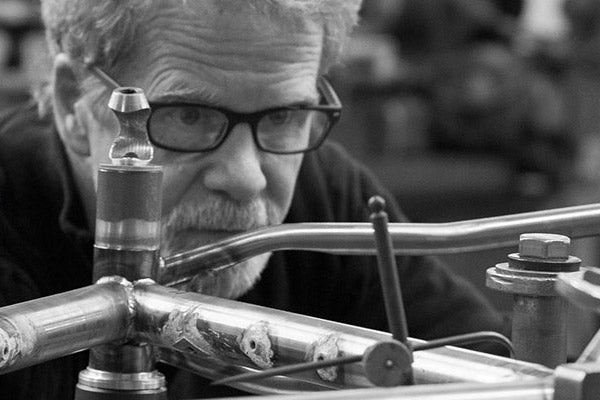

The Spirit of the Yo Eddy Continues
 [product-block handle="7526747144384-fat-chance-yo-eddy-mountain-bike-2017-medium"/]
[product-block handle="7526747144384-fat-chance-yo-eddy-mountain-bike-2017-medium"/]
So what does a modern Yo Eddy need? Of course, it has to be steel. The new version uses modern double-butted steel tubing that is custom-drawn for Fat Chance. The tubes used in the main triangle are also stainless steel, which is incredibly cool since stainless steel frames are quite rare.

One of the stand-out features of the original Yo Eddy was the rear stays. Chris Chance liked to keep the rear end short, but was never a fan of tapering his stays or putting big dents in them for clearance (and it could still clear a 2.5” tire back then!). Keeping with tradition, the modern Yo Eddy uses non-tapered stays that are carefully shaped to create a svelte yet stiff rear end and provide a short 429mm chainstay length.
As for geometry, while it has been modernized, it’s definitely not progressive. The head angle is fairly trail-friendly 68.5 degrees, and the reach is just over 400mm for a size medium. That may sound steep and short to a modern enduro-bro, and it is, but it’s part of what makes the Yo Eddy a Yo Eddy. The original was a razor-sharp racer, and while this version is updated, it still has that edge. There’s something to be said for a short and snappy frame that can change directions in an instant. Some riders even prefer it.
 While the original Yo Eddy was a rigid bike, the new Yo Eddy is designed around a 120mm fork. In this case, it’s equipped with a 120mm Fox Factory 32 that has been color-matched to the beautiful green paint. (It’s not Grello, but it still looks damn good to me!)
While the original Yo Eddy was a rigid bike, the new Yo Eddy is designed around a 120mm fork. In this case, it’s equipped with a 120mm Fox Factory 32 that has been color-matched to the beautiful green paint. (It’s not Grello, but it still looks damn good to me!)
Currently, the new Yo Eddy is offered in 29er and 650b versions. This example is a 650b model with modern DT Swiss XMC 1200 carbon tubeless wheels. While 29” wheels are the dominant wheel size these days, the maneuverability of 27.5” wheels provides a ride feel closer to the original Yo Eddy — perfect for the vintage aficionado.
 Like the frame, the stem and seatpost are American-made with CNC-machined Thomson Elite components. Like the fork, the Elite X4 stem is color-matched to the paint. The Elite seatpost is silver for the vintage vibes. The drivetrain is a standard Shimano Deore XT 11-speed group with an e*Thirteen TRS Plus cassette.
Like the frame, the stem and seatpost are American-made with CNC-machined Thomson Elite components. Like the fork, the Elite X4 stem is color-matched to the paint. The Elite seatpost is silver for the vintage vibes. The drivetrain is a standard Shimano Deore XT 11-speed group with an e*Thirteen TRS Plus cassette.
 While the Fat Chance Yo Eddy has been updated to support modern standards and tech, every new Yo Eddy still features Chris Chance’s top-notch craftsmanship and paint. Most importantly, they carry on the spirit of the legendary 90s Yo Eddy. The snappy ride is not for everyone, but for those who know and appreciate what the Yo Eddy was, it’s a bike unlike anything else available today.
While the Fat Chance Yo Eddy has been updated to support modern standards and tech, every new Yo Eddy still features Chris Chance’s top-notch craftsmanship and paint. Most importantly, they carry on the spirit of the legendary 90s Yo Eddy. The snappy ride is not for everyone, but for those who know and appreciate what the Yo Eddy was, it’s a bike unlike anything else available today.
[button]Shop Mountain Bikes[/button]





